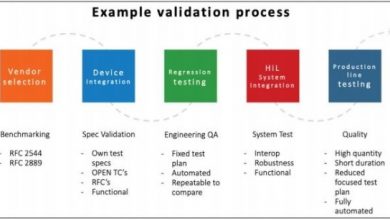Functionality of UBI business model: PTOLEMUS
Thomas Hallauer, research director and Justin Hamilton, Business Analyst at PTOLEMUS consulting group, analyses the impact of the recent announcements on the insurance sector. In the process he shares some insights and results from the new Connected Mobility Global Forecast which details the 14 markets exploding thanks to telematics technology.

Car manufacturers are making great strides to control the global B2B car sharing, rental and leasing markets through either launching or acquiring companies such as Car2Go, DriveNow, Zoomcar, Myles and MiCar. Alongside this, Silicon Valley continues to invest heavily in ride hailing and application based mobility platforms. Uber’s recent valuation of $62.5 billion could even lead one to argue that we are now in the era of the mobility tech bubble.
As a result, we expect the number of cars shared to explode from roughly 125,000 in 2015, to more than 1.3 million in 2020 in Europe alone (this figure includes B2C and P2P models). A good example is GM, which recently merged all of its existing sharing schemes under a single brand; Maven. Among its more typical consumer offering, Maven is also rolling out car sharing schemes for residents of specific apartment buildings in large cities, taking advantage of attached parking. The use of OnStar, GM’s embedded telematics platform, will provide the service with a competitive advantage over non-OEM providers who will continue to rely on third party telematics suppliers.
Onstar is actually proving to be a very serious advantage for GM in the race to own the connected vehicle. The data platform has been used for years to send mileage data to insurers and is now much stronger with more data choice and more partnership models. Allianz has signed with GM in Germany, Octo has an agreement for the whole of Europe and Verisk is working with the GM platform to provide usage-based insurance (UBI) data to US insurance carriers.
The European car manufacturers are following a different strategy. Daimler’s Car2Go platform has become the largest car sharing scheme in the world, driven largely by its early commitment to more flexible, one-way sharing options. Car2Go has over 14,000 vehicles worldwide and in excess of 1.9 million members. After launching in China with 400 cars, it has attracted 78,000 users in less than 2 months of operation. It’s closest rival and former leader, Zipcar, has failed to match this breakneck growth and has little hope of regaining its lost crown. In 2015, we estimate that Car2Go had a turnover of approximately €126 million. Daimler are aiming to increase this to €800 million by 2020. Car2Go has also joined forces with Deutsche Bahn’s well established Flinkster brand in Germany to offer one-way services. At the same time Daimler is working on 5 trials across Europe to include insurance as part of its portfolio. One of them is in the UK, where it offers a UBI proposition for young drivers purchasing a new Smart Forfour model.
BMW’s DriveNow is hot on the heels of its German competitor with more than 4,000 cars and over 500,000 members, in spite of its later entry. BMW recently launched a sister service, ReachNow, in the US, which will utilise the company’s i3 electric car. The German OEM has already found additional ways to capitalise on the technology which underpins the DriveNow network, by introducing a car sharing element to their Alphabet leasing brand.
Mass car sharing or self-drive is a relatively new proposition in India, although the market leader, Zoomcar – which only launched in 2013 – plans to have more than 5,000 cars in place this year. Close competitor Myles, has reported an impressive utilisation rate of 75% across its fleet of 1,200 self-drive cars. The company has similar plans to grow the fleet to 5,000 cars over the coming year.
Car pooling as a mobility service reaches customers in a variety of ways. Typically, car pooling exists as a pre-arranged service between one private individual and another who share a similar origin and destination. Delivering the platform on which this exchange can take place has propelled BlaBlaCar to the unique status as France’s sole unicorn (defined as a company with a market capitalisation of over $1 billion prior to flotation). Ride hailing apps such as Uber and Ola, however, have been quick to offer a car pooling option of their own, where passengers sharing the same destination can also share the cost.
Last month, it was announced that the Google-owned navigation app, Waze had entered the $30 billion car pooling space. Waze’s proposition allows users to share the cost of their daily commute by offering rides to their peers. Days later, Apple announced a $1 billion investment in China’s Didi Chuxing – just one part of a $7 billion investment round. Since launching in 2012, the Chinese ride hailing and car pooling service has grown exponentially and now fulfils over 10 million rides per day.
Uber, Ola and Lyft have all seen significant success with their pooling option. Nonetheless, they rely on networks of contracted drivers to provide transportation, making money by taking a commission from each fare. BlaBlaCar on the other hand built and acquired a network of drivers that do not expect the revenue from pooling to cover anything more than the fuel cost of the ride, making the concept easier to manage and without legal restrictions. With an app able to match drivers and riders in real time, BlaBlaCar would become a major competitor in the global pooling market.
One thing is certain: the newly demonstrated interest of tech giants like Google and Apple in the car pooling space means that competition is going to drive down prices. Only the most streamlined business models will remain competitive, which means all players will have to continue to innovate to survive.
Car rental companies on the other hand are facing serious threats with car sharing encroaching on their market, dwindling margins, rising insurance costs and the growing menace of well funded mobility players. The $58 billion car rental market could well become the car sharing market. Car rental companies currently manage more than 6 million cars worldwide. The edge of the rental business rests in their ability to effectively manage these assets.
The rental business has always survived on razor thin margins. Now, telematics allows rental companies to monitor each vehicle and charge each customer the best price depending on the distance driven, location, behaviour and time. Indeed the vehicle and driving data can help justify additional customer charges such insurance, refuelling or extra mileage. It also protects rental companies’ vehicles against theft and will impact the insurance premiums they pay, especially for the growing business of luxury car rental.
Telematics also cuts cost from the rental process with tracking and keyless technologies enabling automated car sharing solutions and improving the use of each vehicle by having more short trips, a free floating fleet and larger coverage in cities. The sector is moving fast, Avis acquired Zipcar, then the world’s largest car sharing solution, in 2013, Europcar recently acquired Ubeeqo, another car sharing solution provider, and Hertz launched its own on demand car sharing scheme. The world’s third largest car sharing scheme, DriveNow, is a joint venture between BMW and rental company Sixt.
We estimate the share of connected rental passenger cars worldwide will grow from 14% today to 40% in 2020. These vehicles will generate a revenue of more than $25 billion for car rental companies.
That said, car rental growth will hinge on ability to connect and manage assets. If car rental companies don’t invest in connected cars, car sharing companies will and 6 million rental cars will soon become shared cars.
It is clear the innovation around connected vehicles has not escaped insurers, who stand to benefit immediately from the devices they have managed to install onboard. A number of options are used today, but many opportunities remain to add services, whether directly by the insurance carrier, or – as looks more likely – through partnerships.
Leading leasing companies have also been quick to take advantage of the potential from connected services in managing their fleet, providing a cut-price fleet management systems and, at the same time, tying up the data (and the infrastructure costs) with insurers. This is precisely what TrakGlobal has done with Volkswagen leasing.
The problem for many insurance carriers is that the UBI business model is very difficult to make with devices costing as much as $80 – $85. The search for the right balance between cost, functionality and reliability has led the German insurers to trial and buy in bulk 500,000 12V cigarette lighter adapters. If accident detection is not the priority, smartphone-based UBI has the potential to make insurers a significant partner in the markets described above by adding flexibility to the offering along with driver data and predictive risk evaluation.
The mobility markets are of interest for 2 different types of players. Firstly, the incumbent players who are able to use their infrastructure and assets to finance service providers acquisition and with the view of becoming more service oriented. Secondly, the “sharing economy” players who are only interested in the service transaction and will never own any real assets. Uber is not the only one in that case, Rakuten is a leading retailer owning no inventory, Airbnb does not own any hotel and Facebook does not own any content. So, will the next mobility player build no car?
It is possible, but more likely, these players will not outsource motor insurance for very long. So, in the mobility market insurers will not be able to partner with Silicon Valley companies. They will need to foster partnership with OEMs.
Thomas Hallauer is the director of research and marketing at PTOLEMUS Consulting Group. With more than 15 years of experience in the domain of telematics and location-based services, he is an expert in new products and services in the automotive, motor insurance, tolling and positioning industries. Thomas is the author of the ETC Global Study 2015, and co-wrote the UBI Global Study.




